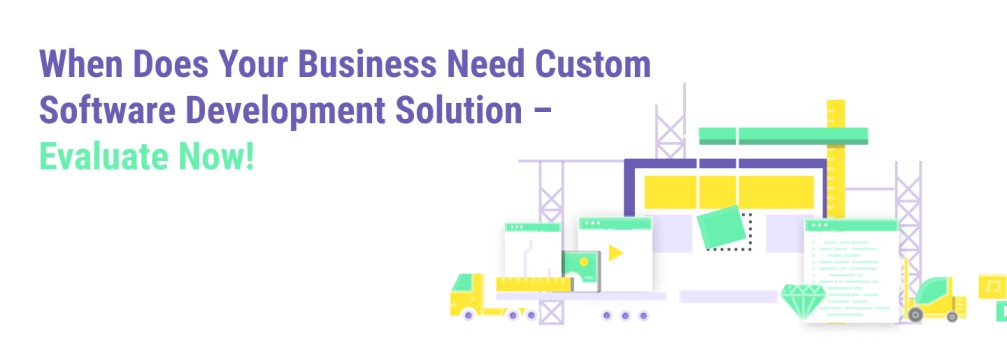Table of Contents
Headless CMS Vs. Traditional CMS – Which is Better for Your Business?

Headless CMS Vs. Traditional CMS – Which is Better for Business? Technology is evolving like never before and websites need to change their structure to incorporate the latest in the technological arena. Content Management System is an integral part of modern websites to display customized content to their users. While most websites use traditional CMSs like WordPress, Drupal and Joomla. There are industries that prefer to switch to headless CMSs. A website can refurbish by changing CMS and leveraging the benefits of the technical approach used in it.
Traditional CMS Vs. Headless CMS – Know The Difference
In today’s day and age, content displayed in diverse forms including text, multimedia, structured content etc. Also, they showcased in diverse forms like desktop websites, mobile apps, wearable gadgets, IoT devices and more. Moreover, content is more personalized and user-centric making it deal with names, locations, preferences etc. Therefore, there is a new approach called headless CMS where the CMS only deals with the content part. It separated from the front end which is why it is called headless CMS.
To precisely define headless CMS, one can say that it is a backend only CMS. That focuses only on the content part and uses RESTful API or GraphQL API to present the content on an array of devices. So, here the head or front end kept away from the body or backend. Therefore, it is termed as headless CMS. The opposite of which is called monolithic or coupled or traditional CMS.
To incorporate headless CMS in a website design, software developers need to separate the template feature from the technology stack and replace it with RESTful API or GraphQL API, which allows data access done earlier by Admin UI. Moreover, this clearly suggests that the front end developer can use any technology irrespective of the CMS used for building the website. For example, a WordPress website has to use WordPress themes or templates only. As opposed to this a CMS like Contentful gives freedom to the front end team to explore and develop the UI part in any technology of their choice.
In addition, the digital marketing team can easily optimize the design without worrying about the backend CMS. The marketing specialist can optimize page speed and web vitals without addressing the bugs of the backend technology. Moreover, these web pages can be relaunched and marketed without losing any content. This makes it a highly beneficial decision for companies that want a startling website with exceptional content management. Based on their requirements, they need to weigh the pros and cons of traditional CMS Vs. headless CMSs and choose the optimum approach for their website.
5 Major Benefits of Choosing a Headless CMS:
For typical, exceptional user experience
When it’s about UX, headless CMS gives developers the liberty to customize it as per their choice. In addition, It does not bind the front end to the limitations of the existing templates and themes of a coupled CMS. The UX team can work around novel ways to deliver excellent UX. Therefore, headless architecture gives more control to front end developers to design superb user experiences.
Technological flexibility
Unlike a monolithic CMS, the headless architecture gives more freedom to front end team to choose the technology of their choice. They can choose as per the requirement of the website without any hindrance of the backend technology. Code changes are easier compared to the traditional CMS approach. It is also easy to integrate with diverse platforms, which adds to the security and scalability of the website.
Creates an Omni-channel environment
The major benefit of comparing headless CMSs Vs. traditional CMS is that this new-age CMS. It is accessible from any device, be it mobile apps, smart speakers, gaming consoles, IoT devices or any device with a digital display. As freedom from screen sizes is the need of the hour. Moreover, the headless or decoupled approach works wonders for website developers.
Ease of content customization
Web designers are bound to add features as per the changes in the behaviour of customers. Otherwise, they will lose out on their competitors. The headless approach makes them focus only on the content part to create personalized pages that give unique customer experiences. This is the easiest way to retain the interest of the visitor and convert them into a long term customer.
Streamlines business process
The basic merit of a headless CMS Vs. traditional CMS is that in the decoupled version. The website can be accessed by diverse teams without any interference from other team. A sales team can design its promotional materials irrespective of the production team and shoot it for marketing. While all teams are integrated and very much in-touch, they can still perform individually. This adds pace to the business processes and reduces time delays caused due to dependencies on other teams.
Do You Need to Choose Headless CMS over Traditional CMS?
Whether any business or website needs a headless CMS or not depends solely on their requirements, nature of the business and technological approach. Moreover, if the website’s front end or templates are simple, easy to publish and needs little support from the IT team then a traditional CMS will work wonders. No need to invest in a headless version. Contrary to that, if your business requires marketing teams to create quick microsites or launch highly optimized landing pages in a jiffy, a headless CMS is the way to go.



